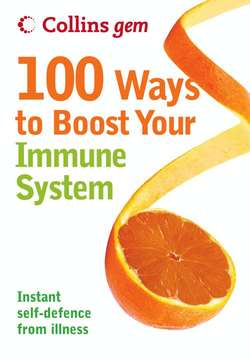Читать книгу 100 Ways to Boost Your Immune System - Theresa Cheung, Theresa Cheung - Страница 9
ОглавлениеMeet the bugs
Your body is under daily attack from infectious agents doing their best to get inside your body. To a bug, your body offers warmth, safety and food; these make it a very attractive proposition.
Bacteria, viruses and other infectious agents live everywhere. You can find them in the air; on food, plants and animals; in soil and in water; and on almost every surface, including those of your own body. They range in size from microscopic single-cell organisms to parasitic worms that can grow to several centimetres in length.
Most of these agents won’t make you ill, but others can cause infection and harm you. Even though your hard-working immune system is powerful and usually successful at defending you from invaders, it does face the constant threat of viruses and bacteria that are forever mutating, and seeking new ways to attack and break down your immune defences. Let’s take a look at the constant threats your immune system faces:
Bacteria and viruses
Among the earliest life forms on Earth, bacteria are self-sufficient, one-celled organisms that are visible under a microscope. Not all bacteria, however, are harmful. Some bacteria that live in your body are actually good for you, such as Lactobacillus acidophilus, the healthy bacteria that reside in your intestines and help you digest food. But when unhealthy bacteria enter your body they can make you ill by rapidly reproducing and secreting toxic chemicals that can damage cells in the tissue they have invaded. Common conditions caused by bacteria include strep throat and gastrointestinal illness triggered by E. coli bacteria, which are often linked to undercooked meat.
Even smaller than bacteria, viruses can only be seen through electron microscopes, high-powered instruments that are used to study very small objects. Unlike bacteria, viruses are not self-sufficient; they need a suitable host in which to reproduce. When a virus such as influenza enters you it takes over healthy cells and spreads through your body, causing illness.
Fungi and parasites
Slightly larger than bacteria, fungi live in the air, water, soil and on plants. Moulds and yeasts are types of fungi that can live in your body but don’t always cause illness. Some fungi such as penicillin – an antibiotic which kills harmful bacteria – have health benefits, but other fungi are not so good for you and can cause illness; an example might be Candida, which can cause yeast infections and oral thrush.
Protozoa are single-celled organisms that spend part of their life cycle outside humans living in food, soil, water or insects, and part of their life cycle living within your body as a parasite. Many protozoa inhabit the intestinal tract and are harmless, but others can cause digestive problems and disease.
Helminths are larger parasites that can enter your body, taking up residence in your intestinal tract where they live off the nutrients in your body. The most common helminths are tapeworms and roundworms.
